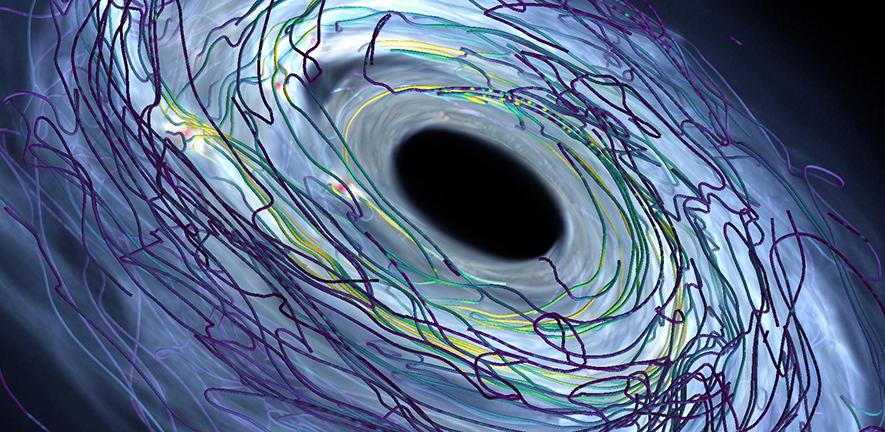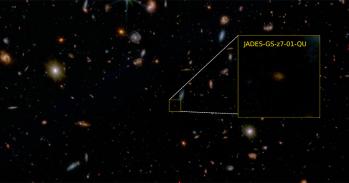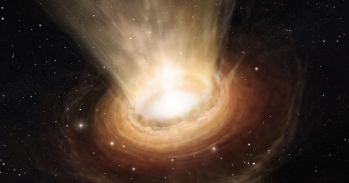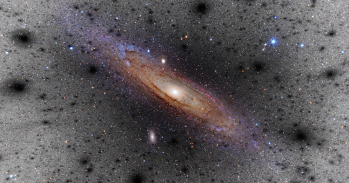
Scientists have suggested a new explanation for the abundance in intermediate-mass exoplanets – a long-standing puzzle in astronomy.
Scientists have suggested a new explanation for the abundance in intermediate-mass exoplanets – a long-standing puzzle in astronomy.
In the last 25 years, scientists have discovered over 4000 planets outside our solar system. From relatively small rock and water worlds to blisteringly hot gas giants, these planets display a remarkable variety.
This variety is not unexpected. The computer models which scientists use to study the formation of planets predict this variety as well. What the models struggle to explain is the observed mass distribution of exoplanets.
The majority fall in the intermediate-mass category – planets with masses of several Earth masses to around that of Neptune. Even in our own solar system, the formation of Uranus and Neptune remains a mystery.
Now, scientists from the Universities of Cambridge and Zurich, associated with the Swiss NCCR PlanetS, have proposed an alternative explanation. Their results are published in the journal Nature Astronomy.
“When planets form from the so-called protoplanetary disk of gas and dust, gravitational instabilities could be the driving mechanism,” said co-author Professor Lucio Mayer from the University of Zurich.
In this process, dust and gas in the disk clump together due to gravity and form dense spiral structures. These then grow into planetary building blocks and eventually planets.
The scale on which this process occurs is very large – spanning the scale of the protoplanetary disk. “But over shorter distances – the scale of single planets – another force dominates: That of magnetic fields developing alongside the planets,” said Mayer.
These magnetic fields stir up the gas and dust of the disk and influence the formation of the planets.
“To get a complete picture of the planetary formation process, it is important to not only simulate the large-scale spiral structure in the disk: the small-scale magnetic fields around the growing planetary building blocks also have to be included,” said lead author Dr Hongping Deng from Cambridge’s Department of Applied Mathematics and Theoretical Physics.
However, the differences in scale and nature of gravity and magnetism make the two forces challenging to integrate into the same planetary formation model. So far, computer simulations that capture the effects of one of the forces well usually do poorly with the other.
To succeed, the team developed a new modelling technique. First, they needed a deep theoretical understanding of both gravity and magnetism. Then, they had to find a way to translate the understanding into a code that could efficiently compute these contrasting forces in unison. Finally, due to the immense number of necessary calculations, a powerful computer was required – like the Piz Daint at the Swiss National Supercomputing Centre (CSCS). “Apart from the theoretical insights and the technical tools that we developed, we were therefore also dependent on the advancement of computing power,” said Mayer.
“With our model, we were able to show for the first time that the magnetic fields make it difficult for the growing planets to continue accumulating mass beyond a certain point,” said Deng. “As a result, giant planets become rarer and intermediate-mass planets much more frequent – similar to what we observe in reality.”
“These results are only a first step, but they clearly show the importance of accounting for more physical processes in planet formation simulations,” said co-author Ravit Helled from the University of Zurich. “Our study helps to understand potential pathways to the formation of intermediate-mass planets that are very common in our galaxy. It also helps us understand the protoplanetary disks in general.”
Reference:
Hongping Deng, Lucio Mayer and Ravit Helled. ‘Formation of intermediate-mass planets via magnetically controlled disk fragmentation.’ Nature Astronomy (2021). DOI: 10.1038/s41550-020-01297-6
Adapted from a University of Zurich press release.

The text in this work is licensed under a Creative Commons Attribution 4.0 International License. Images, including our videos, are Copyright ©University of Cambridge and licensors/contributors as identified. All rights reserved. We make our image and video content available in a number of ways – as here, on our main website under its Terms and conditions, and on a range of channels including social media that permit your use and sharing of our content under their respective Terms.




